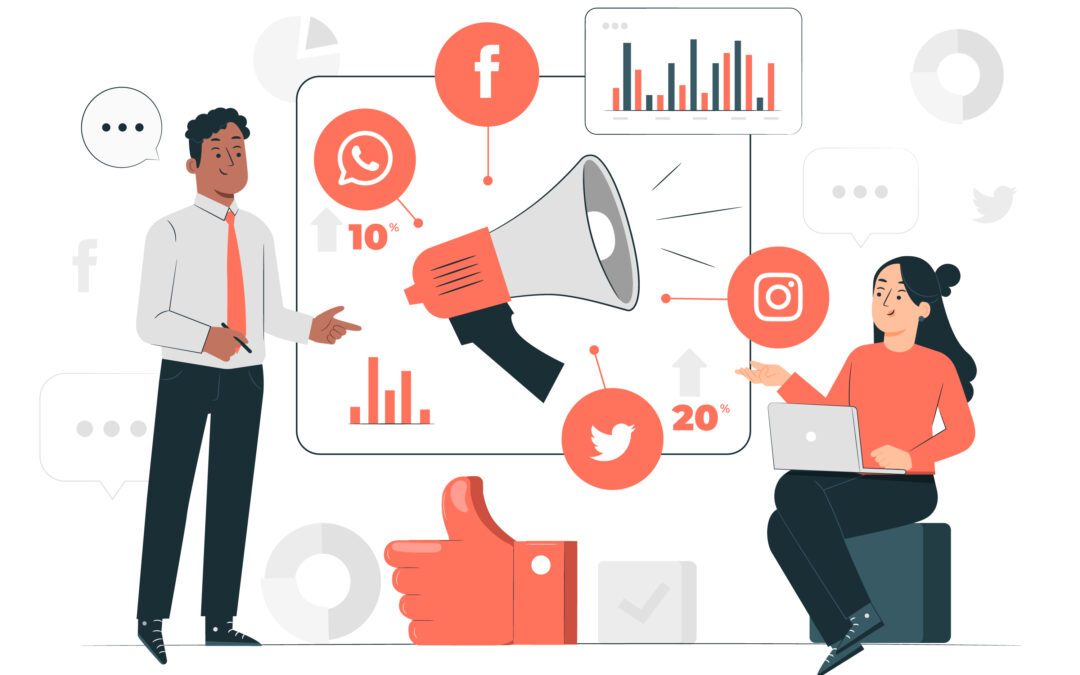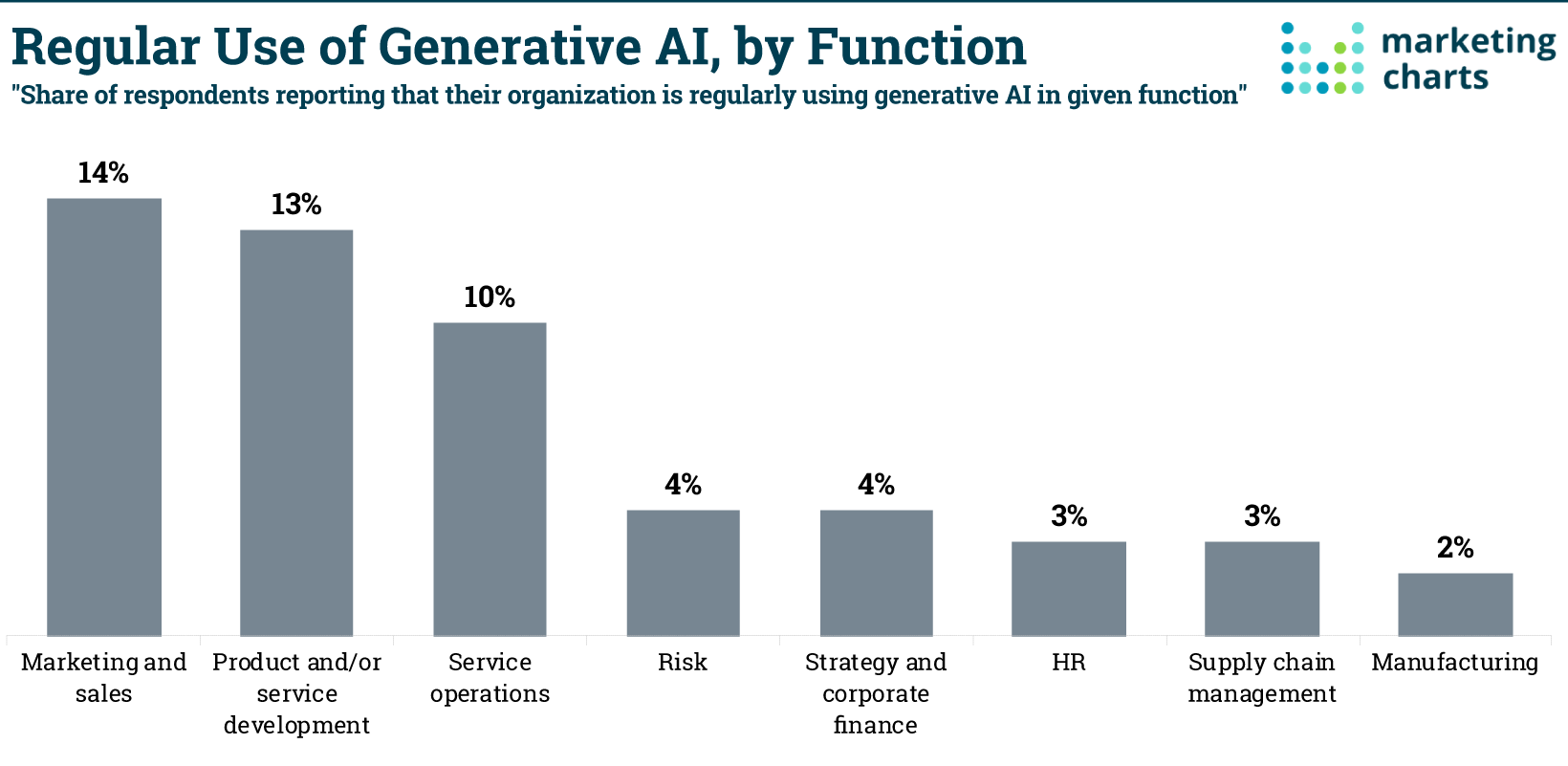
by Lori Berson | Nov 13, 2023 | Marketing, Social Media
Do you ever feel like your social media efforts could be more efficient?
When managing social media, you have a lot on your plate – planning campaigns, creating content, monitoring conversations, and reporting to stakeholders. It’s easy for all the nitty-gritty details to start feeling overwhelming, getting in the way of the work that you need to focus on.
But what if you could effortlessly clear away the clutter, optimize your processes, and set your team up for social media success? With some thoughtful workflow improvements, the right tools, and a bit of strategy alignment across your organization, you can maximize your impact and use your limited resources wisely. To get started, here are a few tips:
Optimize Each Stage of Your Workflow
First, take a look at each stage of your social media workflow. Are there opportunities to alleviate manual tasks to helpful automation tools? Platforms like Hootsuite, Agorapulse, Buffer, and Sprout Social can schedule and publish your content calendar automatically. This small change translates to huge time savings that you can reinvest in a higher-level strategy.
Automate Reporting for Faster Insights
Next, speed up your reporting with easy-to-use analytics tools. Gathering metrics manually slows teams down and keeps your insights locked away in spreadsheets. But social media management platforms can automatically gather data and turn it into insightful presentation-ready reports your C-suite will love. Now your impact is clear, and your stakeholders have what they need to make smart, data-driven decisions.
Share Tools Company-Wide
As social media’s impact grows across the business, loop in key players from beyond your marketing team into your social efforts. For example: sales can analyze performance data and social listening insights to refine strategy. Customer service can foster engagement and provide responsive support. HR can build an employer brand and connect with candidates. Product teams can translate conversations into launches and strategies. Collaborating cross-functionally prevents duplication of efforts, siloes, and missed opportunities. To make this work, core social teams need to adapt as more stakeholders get involved by figuring out ownership and developing cross-functional expertise.
Integrate Social Media Tools With Your Tech Stack
Streamline your broader technology stack. Unified platforms with built-in workflows and integrations give your whole organization a holistic view of the customer without the hassle of constant tool-switching.
Refine Influencer and Partnership Processes
Simplify the way you work with influencers and brand partners. Managing a bunch of one-off email threads can get hectic fast. Look for ways to directly connect your influencer efforts with the rest of your social strategy for smoother execution.
Implementing even a few of these tips can make a massive difference in how much you accomplish each day. Best of all, with a few workflow tweaks, you can clear away complexity and make room for the work that takes your social media marketing to the next level.
Start optimizing your social media marketing today!
For help with your social media markering, schedule a call or email Lori Berson at lberson@BersonDeanStevens.com.
BersonDeanStevens has been a recognized brand strategy and marketing leader for over 25 years. We work in partnership with you to differentiate your brand and achieve your business goals. Client list.

by Lori Berson | Oct 24, 2023 | Marketing, Mobile marketing
SMS Marketing, better known as Text Messaging, is a direct, quick, and effective way to reach prospects and clients. With over 90% of text messages being opened and read within 3 minutes, it offers unparalleled open and response rates compared to other marketing channels like email.
What is SMS Marketing?
SMS stands for Short Message Service. SMS marketing is simply the use of text messaging to communicate promotions, offers, reminders, and other marketing messages directly to your clients’ mobile phones.
Unlike email marketing which can get lost in crowded inboxes, SMS cuts through the noise since it pops up immediately on the user’s phone screen. And since most people have their phones on them at all times, you can be sure your message will be seen.
Benefits of SMS Marketing
-
High open rates – almost everyone reads text messages shortly after receiving them. This gives your messages a much higher chance of being seen.
-
Improved client engagement – SMS creates a more personal connection with clients by communicating directly over their mobile phones – which leads to better engagement.
-
Real-time communication – send and receive messages instantly with clients for time-sensitive promotions or alerts.
- Works on any mobile phone – no need for a smartphone or mobile app.
-
Targeted campaigns – SMS allows you to segment your clients based on preferences and send targeted offers that are more relevant.
-
Analytics – get data on open rates, click-through rates, and other metrics to refine your campaigns.
- Cost-effective – SMS costs much less than other marketing channels like print, TV, and radio. The return on investment is very high.
Potential Drawbacks
- Can come across as intrusive if overused.
- Limited message length (160 characters max).
- Mobile carriers now offer spam filters for SMS.
- No formatting or attachments like email.
Overall, the advantages heavily outweigh the potential cons. As long as you get consent first and respect the user, SMS presents a huge opportunity for lead generation and sales.
How To Use SMS Marketing
Here are some tips on how to effectively leverage SMS for your business:
- Get consent first – never send unsolicited messages. Have clients and prospects opt-in by checking a box on your website, on feedback forms, or through sign-up forms.
- Consistently and prominently identify your business at the beginning of every text message you send to your subscribers. By including your name or brand at the start, you immediately establish a connection and make it evident who is sending the message.
- Send relevant and valuable content – only send messages that would genuinely interest your subscribers based on their preferences and history with your brand. Mix promotional content with value-added content. For example: you can send reminders, exclusive offers, event invitations, coupon codes, or even just entertaining content.
- Personalize the messages with their name when possible.
- Time it right – pay attention to when your clients are most responsive. You may get better results by sending messages in the mornings or evenings when people are more likely to have time to engage.
- Automate campaigns – the right marketing automation platform allows you to schedule and automate campaigns to save time.
- Track performance – use SMS analytics to see open rates, clicks, opt-outs, and optimize future messages. A/B test content when possible.
- Combine SMS with other channels – use SMS to supplement your email, social media, and advertising campaigns.
- Give opt-out option – always include instructions in your message for how to opt out of future messages. This is required by anti-spam laws.
- Make sure your website is optimized for mobile screens, so you can deliver a seamless browsing experience for users.
- Use an SMS platform that has a user-friendly interface and offers contact management, message scheduling, and analytics. It should also integrate with your other software platforms.
SMS marketing provides a simple yet highly effective channel for all businesses to connect and engage with prospects and clients.
Ready to get started with SMS marketing?
Our team can help you set up SMS that seamlessly integrates with your existing systems, and develop effective campaigns tailored to your business.
For help with your SMS markering, schedule a call or email Lori Berson at lberson@BersonDeanStevens.com.
BersonDeanStevens has been a recognized brand strategy and marketing leader for over 25 years. We work in partnership with you to differentiate your brand and achieve your business goals. Client list.

by Lori Berson | Sep 26, 2023 | AI, artificial intelligence, Marketing
According to the 2023 McKinsey Global Survey and the Quantum Black study, generative AI is poised to become a mainstream technology used across organizations in 2023. Generative AI refers to AI systems that can generate new content, such as text, code, images, or video, based on an initial text or multimedia prompt.
The McKinsey survey of nearly 3,000 executives worldwide found that 52% of respondents already adopt some form of generative AI, with an additional 38% planning to adopt it within the next year. The Quantum Black study provided further insights into which roles are leading the adoption.

Marketing and Communications
Marketing and communications teams were early pioneers in testing applications of generative AI. Over two-thirds of survey respondents from marketing functions reported using generative AI, with applications ranging from written content creation to visual asset design. Key benefits include increased efficiency and productivity, as well as the ability to rapidly customize content.
Technical and Engineering Roles
Developers, engineers, and IT professionals also reported significant usage of generative AI, at 64% of survey respondents. Key applications include using natural language prompts to generate code, automating software documentation, and assisting with debugging. Generative AI delivers major time savings and frees up developers to focus on higher-value strategic tasks.
Customer Service and Sales
Generative AI is assisting 57% of customer service professionals as an AI-powered chatbot handling routine inquiries. It’s also supporting sales teams in 50% of organizations surveyed, by generating content and insights to assist with proposals and presentations. Key advantages include scalability, consistency, and rapid response times.
Finance and Accounting
In finance, generative AI helps analysts and accountants produce reports, projections, and financial models using simple prompts in natural language. In the survey, 47% of finance professionals reported using generative AI to improve efficiency and accuracy.
Legal
The legal profession is starting to adopt generative AI as well, with 45% of respondents reporting usage. Key applications are document and contract review and generation, legal research, and summarizing case files. Top benefits include speed, cost, and risk mitigation.
Human Resources
HR teams are using generative AI for 39% of survey respondents, especially for talent acquisition. Applications range from generating job descriptions to conducting initial resume screens. Generative AI delivers significant time and cost savings in high-volume HR tasks.
The McKinsey survey makes it clear that generative AI adoption is accelerating across the enterprise. As organizations incorporate this potentially transformative technology, they’ll need to manage risks around data privacy, security, bias, and misinformation (aka hallucinations). But when used responsibly, generative AI can automate repetitive tasks, drive efficiencies, and allow all of us to focus on more strategic and creative work.
About the Data: The results are based on an April survey of 1,684 respondents “representing the full range of regions, industries, company sizes, functional specialties, and tenures. Of those respondents, 913 said their organizations had adopted AI in at least one function.” Check out the full survey.
Need assistance using AI to enhance and expedite your marketing initiatives? Schedule a call or email Lori Berson at lberson@BersonDeanStevens.com.
BersonDeanStevens has been a recognized brand strategy and marketing leader for over 25 years. We work in partnership with you to differentiate your brand and achieve your business goals. Client list.

by Lori Berson | Sep 24, 2023 | AI, artificial intelligence, Marketing
Getting positive references from satisfied clients can go a long way in establishing credibility for your business. When you need a client to provide a testimonial, reference, or case study, follow these tips for making the process smooth and successful:
Choose the Right Client
- Select clients you have worked with extensively and who you know are very pleased with your product or service. Avoid picking those who had any negatives in their experience with you.
- If possible, choose recognizable companies or those in industries you’re trying to attract as they will lend the most credibility.
Make a Personalized Request
- Contact your client and remind them of the work you did together. Make your request personal and specific to them. Do not send a generic templated email.
- Explain why you are asking for a reference, testimonial, or case study and how will it help your business.
Provide Details Upfront
- Let your client know exactly what you need from them, whether it’s a quote, video interview, etc.
- Give them guidelines, sample quotes, suggested talking points, or case study formats. The clearer you are, the better.
- Explain precisely how the reference will be used in your marketing materials, website, proposals, etc.
- If they decline, graciously accept their refusal and part on good terms in case they reconsider in the future.
Thank All Clients Who Do Provide a Reference
- Consider providing discounts on future work or other perks in exchange for their taking the time to provide a reference.
- Make your clients feel appreciated by sending a gift card or featuring them prominently in your materials.
Using these tips will go a long way toward getting the client references and testimonials you need to boost your business. Just remember to make the process easy.
Testimonial Apps
Here are several apps that can help you easily collect and manage client testimonials:
- BirdEye: manage customer feedback, including testimonials. It enables you to gather reviews from multiple platforms and display them on your website.
- Boast: capture and showcase video testimonials from your clients. It provides tools to record, upload, and organize testimonials, making it easy to integrate them into your website or marketing materials.
- Feefo: collect genuine, verified customer reviews and insights. It provides analytics to understand customer sentiment and integrates with e-commerce platforms.
- GatherUp: gather feedback and testimonials through surveys and review requests. It also assists in managing and amplifying customer stories to boost your online reputation.
- ReputationStacker: automate the process of collecting testimonials and reviews from customers. It sends out requests via SMS and email, streamlining the feedback collection process.
- Senja: generate high-converting testimonial collection forms you can share anywhere. Invite your clients. Offer rewards. Send thank you notes.
- Testimonial: create branded testimonial forms, gather client feedback, and showcase testimonials on your website. It offers customization options and integration with various platforms.
- Trustpilot: collect and showcase customer reviews and testimonials. It offers widgets and integration options to embed reviews on your website and leverage social proof.
- Vouch: collect video testimonials with a single link. Add your questions, send the request, and capture the authentic voice of your customers, all in a few clicks.
- Yotpo: collect and display customer reviews, photos, and Q&A content, which can enhance your brand’s credibility.
Remember to consider your specific needs, such as the type of testimonials you want to collect (text, video, etc.), integration capabilities with your existing software, and the overall user experience when choosing the best testimonial software app for your business.
Need assistance with your client referrals? Schedule a call or email Lori Berson at lberson@BersonDeanStevens.com.
BersonDeanStevens has been a recognized brand strategy and marketing leader for over 25 years. We work in partnership with you to differentiate your brand and achieve your business goals. Client list.

by Lori Berson | Aug 30, 2023 | AI, artificial intelligence, Marketing
AI has limitations, but it can be a productivity booster when used strategically.
7 Ways AI Can Make Work Life Easier
- Automate repetitive tasks – AI can take over mundane, repetitive tasks like data entry freeing up employees’ time for more meaningful work.
- Improve workflows – AI tools can analyze workflows and processes to identify bottlenecks and areas for optimization for increased efficiency.
- Personalize customer experiences – Chatbots and virtual assistants powered by AI can provide customized service to customers 24/7 to improve customer satisfaction.
- Generate insights from data – AI excels at finding patterns in large datasets. These insights can inform better decision-making and strategy.
- Create content – AI copywriting tools can generate blog posts, social media content, emails, etc. helping your team scale content creation.
- Enhance human capabilities – Rather than replacing humans, AI augments human skills and abilities. For example, AI can help salespeople identify the best prospects.
- Increase accessibility – AI powers assistive technologies that make work more accessible for employees with disabilities.
When thoughtfully implemented, AI technologies can take over repetitive, low-value tasks while empowering employees to focus on more meaningful, human-centric work creating efficiencies while still keeping the human touch.
ChatGPT Advantages and Prompts to Use
- Comparing concepts:
– Please compare and contrast the concepts of [concept 1] and [concept 2].
– What are the key similarities and differences between [concept 1] and [concept 2]?
– Can you explain how [concept 1] and [concept 2] are alike and how they differ in a paragraph?
– Help me understand the relationship between [concept 1] and [concept 2] by outlining their main commonalities and distinctions.
– What distinguishes [concept 1] from [concept 2]? Provide a brief comparison of their defining features.
– Identify 3-5 ways that [concept 1] and [concept 2] are similar and 3-5 ways they are different.
– Create a table comparing [concept 1] and [concept 2] across categories like [category 1], [category 2], [category 3].
– How does [concept 1] contrast with [concept 2] in terms of [specific attribute]?
- Researching topics:
– Please provide a high-level overview of current research on [topic] in a few paragraphs.
– Can you summarize the key findings and implications from recent studies on [topic]?
– What are the main themes and conclusions in academic literature about [topic] over the past 5 years?
– Give me a short summary of the state of research on [topic] focusing on the most influential studies and ideas.
– Provide a concise overview of important research on [topic], covering things like main hypotheses, methodologies, results, and limitations of the existing literature.
– In 2-3 paragraphs, synthesize the key insights and open questions from scholarship on [topic].
– What are the critical debates or unresolved questions around [topic] based on a review of current academic research on this subject?
– What are the 3-5 most important papers on [topic] and what are their main ideas and contributions to the field’s understanding of this subject?
- Generating ideas:
– Can you provide 5-10 creative and innovative ideas for my project about [topic]?
– What are some outside-the-box ideas I could explore for my [project type] on [topic]?
– Help spur my creativity by suggesting unconventional approaches I could take for [project name].
– Give me a list of thought-provoking and imaginative ideas that would make my [project name] unique and memorable.
– Please brainstorm original ideas for my [project name] that go beyond the obvious – feel free to think wildly!
– Suggest [number] fun, audacious concepts I could incorporate to make my [project name] truly groundbreaking.
– What are some experimental directions I could take my [project name] in to make it innovative and ahead of its time?
– Help get my creative juices flowing by recommending [number] novel ways to approach my [project name].
– Can you play devil’s advocate and suggest some radical ideas to make my [project name] stand out from the crowd?
- Drafting emails:
– Please draft a friendly email to [name] asking for advice about [topic].
– Can you write a casual email to [name] introducing myself and discussing [topic]?
– I’d like to email [name] on [topic]. Can you compose a warm, conversational email that briefly explains the situation and poses my question?
– Could you put together a short, upbeat email to [name] about [topic] and let them know I’d appreciate any guidance they can offer?
– Please compose a polite email to [name] on [topic]. Use a positive, collegial tone.
– I want to email [name] to learn more about [topic]. Can you draft a friendly email that briefly sums up my interest and asks them to share their knowledge on the subject?
– Can you write a cheerful and relaxed email to [name] touching on [topic]?
- Editing documents:
– Take out all Oxford commas in this document while maintaining the meaning.
– Can you revise this text by removing the Oxford commas throughout while keeping the text clear and readable?
– Please replace all instances of [word 1] in the following document with [word 2].
– Find and replace [word 1] with [word 2] throughout this text without changing the overall meaning.
– Edit the below passage by changing [word 1] to [word 2] wherever it appears. The overall style and voice should remain the same.
- Explaining complex topics:
– Please explain the concept of [complex topic] in simple language that a high school student could understand.
– Can you provide a basic overview of [complex topic] using simple words and examples rather than technical jargon?
– I’m having trouble understanding [complex topic]. Can you walk me through the key ideas in plain English for a beginner?
– Using simple analogies and layman’s terms, summarize what [complex topic] is all about.
– Pretend you are explaining [complex topic] to a 12-year-old. Use simple phrases and avoid advanced vocabulary.
– Break down the main elements of [complex topic] into bite-sized pieces that are easy to digest for someone without subject matter expertise.
– Help me understand the fundamentals of [complex topic] by using straightforward language a child could comprehend.
- Taking meeting notes:
– Can you summarize the key points from my meeting with [name]?
– I recently had a meeting with [name] about [topic]. Can you briefly outline the key takeaways and next steps we agreed on?
– I met with [name] to talk about [topic]. In 3-4 bullet points, can you highlight the most important conclusions we came to and actions we decided on?
– Please review my notes from my meeting with [name] and provide a concise summary of the essential decisions made, open questions remaining, and next steps.
– I had a meeting with [name] and need help recapping our main agenda items, conclusions reached, and who is responsible for any follow-up tasks. Can you summarize this briefly for me?
– Here are some high level points from my discussion with [name] earlier. Can you distill this down into a short paragraph covering the main takeaways and what we are each going to work on going forward?
- Automating tasks:
– How can I automate [task] step-by-step?
– Please provide detailed instructions for setting up automation for [task].
– What is the process for automating [task], breaking down each step clearly from start to finish?
– I want to automate [task] in my workflow. Can you outline the specific steps I would need to take to set this up?
– Could you provide a simple tutorial explaining how to configure automation for [task], including any software or tools needed?
– To streamline [task], can you provide sequential, straightforward instructions on automating it that explain what needs to be done at a basic level?
– Please walk me through how to automate [task] as if you were explaining to someone without any technical knowledge or experience.
- Proofreading writing:
– Please proofread the following document for any spelling, grammar, or syntax errors.
– Can you review this report for typos, grammatical mistakes, and overall clarity? Let me know if you have any suggested improvements.
– I need this [document/email/report/etc] checked for spelling and grammar errors. Can you read through it carefully and correct any issues you find?
– Please thoroughly proofread the below text and fix any spelling, punctuation, or grammatical errors you come across to make it read clearly.
– Could you edit the following passage to ensure the spelling, grammar, and sentence structure is correct? Flag any problematic areas.
– I want this to be error-free. Can you proofread this [document/transcript/article] and make sure the spelling, grammar, and punctuation are right?
– Please polish up this [document] by correcting any typographical, spelling, grammar, or syntax errors to get it presentation-ready. Focus on precision.
- Summarizing documents:
– Please summarize the key takeaways from this long article in 2-3 sentences.
– Can you summarize this [document] in 3 short bullet points?
– Please provide a concise 150-word summary of the key points in this [document/article].
– I don’t have time to read this entire 10-page article. Can you provide a short summary highlighting the most important information and takeaways?
– What are the critical themes and implications in this dense, lengthy article? Please concisely summarize them for me.
– Please extract and summarize the core findings and arguments made in this very long journal article in no more than 150 words.
– I need help identifying the most significant points in this very detailed, extensive report. Can you summarize the main takeaways in a few bullet points?
– Could you read through this full research paper and highlight the fundamental concepts, conclusions, and insights in a short synopsis?
– Please distill this lengthy analysis into a concise summary covering the overall purpose, methods, key results, and implications in 2-3 paragraphs.
- Analyzing reviews:
– Please review these customer comments and identify the overall sentiment as positive, negative or neutral.
– Based on these user reviews of our [product/service], would you say the feedback is generally positive, negative, or mixed? Please explain your analysis.
– Can you read through these survey responses and summarize whether customers are satisfied or dissatisfied with their experience? Include relevant examples.
– What is the overall sentiment from customers in these social media posts about our brand? Are they praising, complaining or providing suggestions? Please categorize.
– I want to understand how customers feel about this new feature based on their feedback. Can you analyze these quotes and tell me if reactions are positive or negative overall?
– Please go through these app reviews and tell me if the common themes suggest users are happy or unhappy with our recent updates. Justify your conclusions with evidence.
– “Could you review our latest customer service transcripts and identify any common pain points or frustrations? I want to improve the areas generating the most negative sentiment.
For complex marketing tasks like strategic planning, creative campaigns, analytics, and SEO, AI has limits. Since everyone is using the same tools and getting similar suggestions, the results won’t help you stand out from your competition. For customized strategies that help you beat your competitors, it’s best to partner with an expert marketing agency. Their tailored approach focuses on your specific business goals.
AI is best used for routine drafting and editing tasks. But humans provide the high-value strategies, creative, and marketing insights that can boost your business.
Need assistance using AI to enhance your marketing initiatives? Schedule a call or email Lori Berson at lberson@BersonDeanStevens.com.
BersonDeanStevens has been a recognized brand strategy and marketing leader for over 25 years. We work in partnership with you to differentiate your brand and achieve your business goals. Client list.

by Lori Berson | Aug 29, 2023 | Marketing
If you’re thinking of starting a business, the following is a step-by-step checklist to help get your business off the ground:
Research and validate your business idea.
- Define your unique value proposition.
- Identify potential customers and market demand.
- Conduct a competitive analysis.
Form a legal business entity.
- Choose a business structure (LLC, S-Corp, etc.).
- Register your business name.
- Obtain necessary licenses and permits.
Prepare a business plan to include:
- Executive summary.
- Company description.
- Market analysis.
- Financial projections.
- Funding requirements.
Fund your business.
- Bootstrap financing.
- Seek investments from friends and family.
- Apply for small business loans or grants.
- Crowdfund capital.
Find a location.
- Home-based or rented office/retail space.
- Buy or lease equipment.
- Set up utilities, computers, phones, etc.
Build your team.
- Define roles and responsibilities.
- Develop processes and reporting structures.
- Hire employees or outsource contractors.
Marketing launch.
- Create brand identity and assets.
- Build a website and online presence.
- Network and form partnerships.
- Promote the launch on social media.
Track your progress.
- Set goals and track the metrics.
- Solicit customer feedback.
- Refine products and marketing.
Need assistance with your marketing? Schedule a call or email Lori Berson at lberson@BersonDeanStevens.com.
BersonDeanStevens has been a recognized brand strategy and marketing leader for over 25 years. We work in partnership with you to differentiate your brand and achieve your business goals. Client list.






